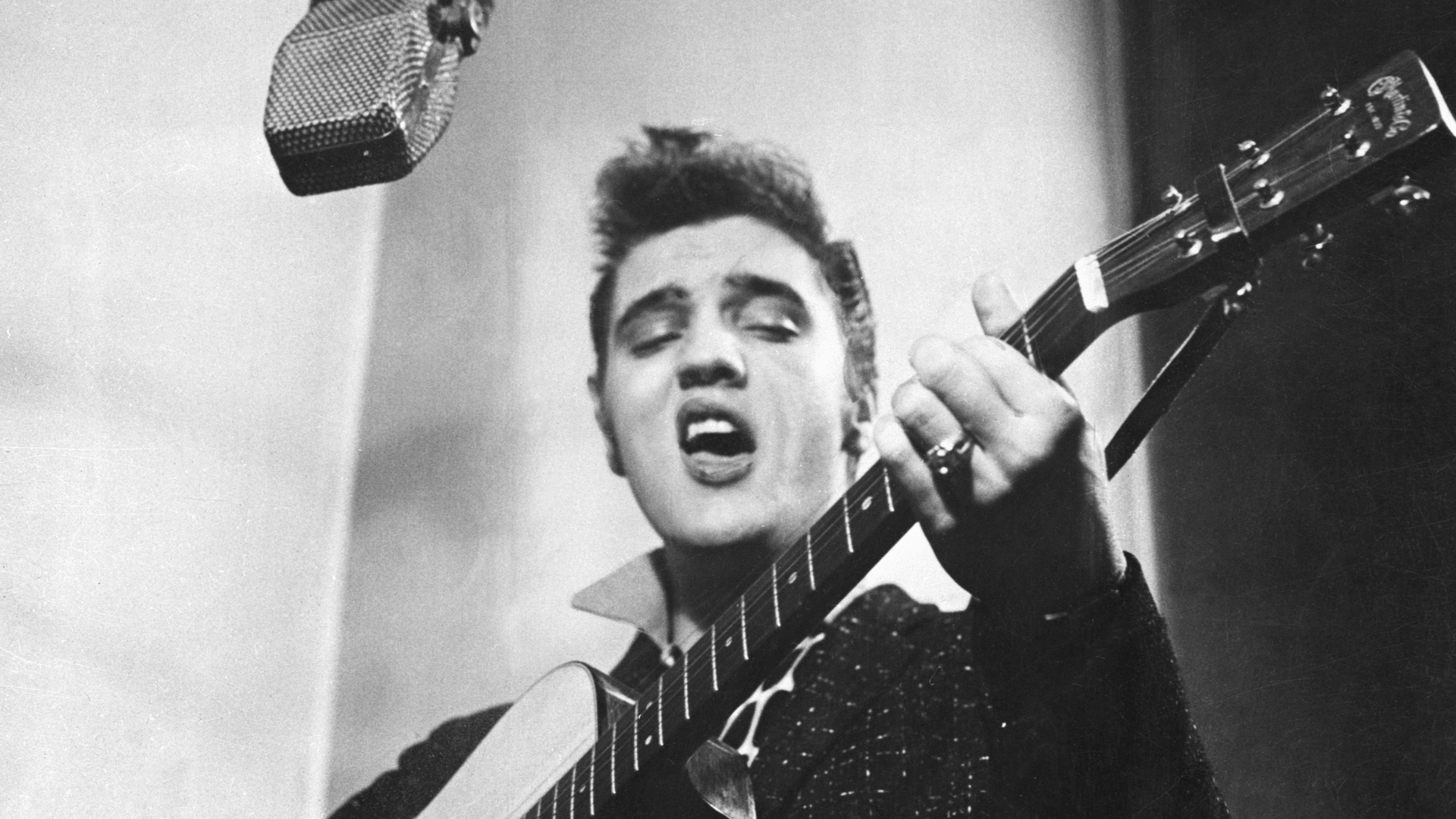“When My Blue Moon Turns to Gold Again” is a Timeless Country Classic by Elvis Presley, Showcasing His Mastery in Blending Genres and Evoking Deep Emotion.0h
“When My Blue Moon Turns to Gold Again” is a classic country song performed by Elvis Presley that highlights his ability to blend genres and deliver heartfelt performances. Originally written by Wiley Walker and Gene Sullivan in 1940, the song was already a popular standard in the country music world before Presley gave it his unique touch.
Elvis recorded “When My Blue Moon Turns to Gold Again” in 1956, during a pivotal moment in his career when he was transitioning from regional star to a national sensation. The song was included on his second studio album, Elvis, which also featured a mix of rock, gospel, and country influences. Elvis’s version of this song stands out due to its lively arrangement, which gives the ballad a more upbeat and dynamic feel than the original version.

Presley’s rendition of the song reflects his early rock ‘n’ roll roots, with its rhythmic tempo and driving beat, yet maintains the emotional depth of the original country ballad. His rich, expressive vocals carry the wistfulness of the lyrics, which speak about the hope of rekindling lost love when the “blue moon turns to gold again.” The combination of his heartfelt delivery and the lively instrumentation gives the song a timeless quality, making it a favorite among fans of both country and rock music.

Musically, “When My Blue Moon Turns to Gold Again” features a prominent guitar rhythm, characteristic of Presley’s early recordings, and a strong backbeat that enhances the rockabilly style that defined much of his early work. His vocal performance shines through, shifting effortlessly between soft, tender notes and more powerful, assertive moments. This versatility was key to Elvis’s widespread appeal, as he could evoke deep emotion while maintaining an energetic presence.

The song’s themes of love, loss, and hope for renewal resonated with many listeners at the time of its release and continue to be relatable today. Its blend of melancholy and optimism captures the complex emotions associated with relationships, a common thread in many of Presley’s songs.
“When My Blue Moon Turns to Gold Again” is a notable part of Elvis Presley’s extensive repertoire, showcasing his ability to take a traditional country tune and infuse it with his signature rock ‘n’ roll energy. It stands as a testament to his versatility as an artist and his enduring influence on both country and rock music.
Elvis Aaron Presley, often referred to as the “King of Rock and Roll,” was born on January 8, 1935, in Tupelo, Mississippi, USA. He rose to prominence in the mid-1950s, becoming one of the most iconic and influential figures in the history of popular music. Presley’s musical journey began at an early age when he started singing in church and listening to various genres of music, including gospel, blues, and country. In 1954, he signed a recording contract with Sun Records, where he began his career blending elements of rockabilly, rhythm and blues, and country music. His breakthrough came with the release of his first single, “That’s All Right,” followed by a string of hits such as “Heartbreak Hotel,” “Hound Dog,” and “Jailhouse Rock.” With his charismatic stage presence, distinctive voice, and provocative dance moves, Presley captured the hearts of audiences worldwide, revolutionizing the music industry and popular culture. Presley’s impact extended beyond music; he also found success as an actor, starring in a series of films throughout the 1960s. Despite his commercial success, he faced criticism from some quarters for his crossover into mainstream entertainment and the perceived dilution of his musical authenticity. Throughout his career, Presley struggled with the pressures of fame, leading to personal challenges, including substance abuse and health issues. Despite these obstacles, he remained a beloved figure, revered for his contributions to music and his enduring legacy. Tragically, Elvis Presley passed away on August 16, 1977, at the age of 42, leaving behind a legacy that continues to resonate with generations of fans. He was posthumously inducted into the Rock and Roll Hall of Fame, and his music remains a timeless testament to his enduring talent and cultural impact.

